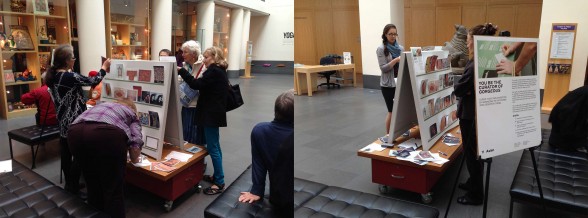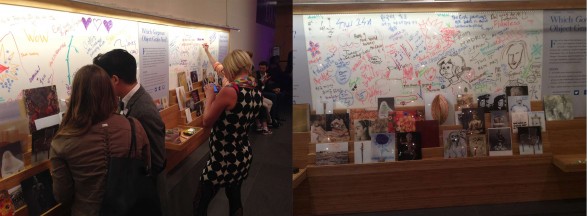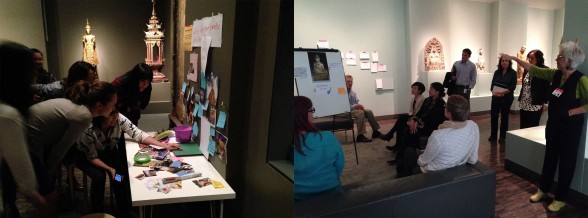Exhibition and Design Prototyping at the Asian Art Museum

Who will you meet?
Cities are innovating, companies are pivoting, and start-ups are growing. Like you, every urban practitioner has a remarkable story of insight and challenge from the past year.
Meet these peers and discuss the future of cities in the new Meeting of the Minds Executive Cohort Program. Replace boring virtual summits with facilitated, online, small-group discussions where you can make real connections with extraordinary, like-minded people.
Civic Innovation Spotlight
Meeting of the Minds is working with the San Francisco Mayor’s Office of Civic Innovation (MOCI) to bring you the Civic Innovation Spotlight, a monthly feature that shares the stories of cutting-edge and innovative civic projects in San Francisco. This series shares the untold stories of government innovation and inspiration related to accessibility, education, health, energy, and public services in San Francisco. For more articles in the Civic Innovation Spotlight, click here.
The Asian Art Museum seeks to provide an even deeper and more enjoyable visitor experience through prototyping exhibition elements and inviting visitor feedback as part of our exhibition interpretation planning and design process.
Prototyping is a low risk way of experimenting with new design or interpretive elements to make sure they will work and achieve their intended outcomes. The process will help us develop exhibition content and designs based on visitor feedback that include community voices.
Prototyping is innovative within the art museum world. Due to the high polish and perfection sought in traditional art museums and compressed exhibition timelines, low fidelity mock ups are rarely employed in public galleries.
Last summer, we mocked up an interactive element to coincide with the Gorgeous special exhibition. The activity invited visitors to make their own meanings about the artworks through a “curate-your-own-exhibition” activity. Based on our observations of visitors and other staff using the mock up, we simplified the language of the invitation and made it more open-ended.
In another instance, staff spent a morning in three different galleries to brainstorm new ways of interpreting the artworks there. Using post-it notes, butcher paper, tablet computers, and photo print-outs we mocked up some ideas. That afternoon, we talked with visitors to get their feedback on the concepts in order to test our own assumptions and see if our ideas resonated with visitors. Some of these ideas may be used in future changes to our gallery spaces.
Thanks to funds from the Institute of Museum and Library Services (IMLS) and the Mellon Foundation, the staff members at the Asian Art Museum are reaching out to colleagues at other museums across the country that have implemented prototyping to customize a process that will work in our context and provide room for growth and new ideas.
Discussion
Leave your comment below, or reply to others.
Please note that this comment section is for thoughtful, on-topic discussions. Admin approval is required for all comments. Your comment may be edited if it contains grammatical errors. Low effort, self-promotional, or impolite comments will be deleted.
2 Comments
Submit a Comment
Read more from MeetingoftheMinds.org
Spotlighting innovations in urban sustainability and connected technology
Middle-Mile Networks: The Middleman of Internet Connectivity
The development of public, open-access middle mile infrastructure can expand internet networks closer to unserved and underserved communities while offering equal opportunity for ISPs to link cost effectively to last mile infrastructure. This strategy would connect more Americans to high-speed internet while also driving down prices by increasing competition among local ISPs.
In addition to potentially helping narrow the digital divide, middle mile infrastructure would also provide backup options for networks if one connection pathway fails, and it would help support regional economic development by connecting businesses.
Wildfire Risk Reduction: Connecting the Dots
One of the most visceral manifestations of the combined problems of urbanization and climate change are the enormous wildfires that engulf areas of the American West. Fire behavior itself is now changing. Over 120 years of well-intentioned fire suppression have created huge reserves of fuel which, when combined with warmer temperatures and drought-dried landscapes, create unstoppable fires that spread with extreme speed, jump fire-breaks, level entire towns, take lives and destroy hundreds of thousands of acres, even in landscapes that are conditioned to employ fire as part of their reproductive cycle.
ARISE-US recently held a very successful symposium, “Wildfire Risk Reduction – Connecting the Dots” for wildfire stakeholders – insurers, US Forest Service, engineers, fire awareness NGOs and others – to discuss the issues and their possible solutions. This article sets out some of the major points to emerge.
Innovating Our Way Out of Crisis
Whether deep freezes in Texas, wildfires in California, hurricanes along the Gulf Coast, or any other calamity, our innovations today will build the reliable, resilient, equitable, and prosperous grid tomorrow. Innovation, in short, combines the dream of what’s possible with the pragmatism of what’s practical. That’s the big-idea, hard-reality approach that helped transform Texas into the world’s energy powerhouse — from oil and gas to zero-emissions wind, sun, and, soon, geothermal.
It’s time to make the production and consumption of energy faster, smarter, cleaner, more resilient, and more efficient. Business leaders, political leaders, the energy sector, and savvy citizens have the power to put investment and practices in place that support a robust energy innovation ecosystem. So, saddle up.









Congratulations on good work prototyping. Do I see you were able to do part of the activities with art installed? Do I detect the hand of Kathy McLean at work here?
Yes and yes! Thanks